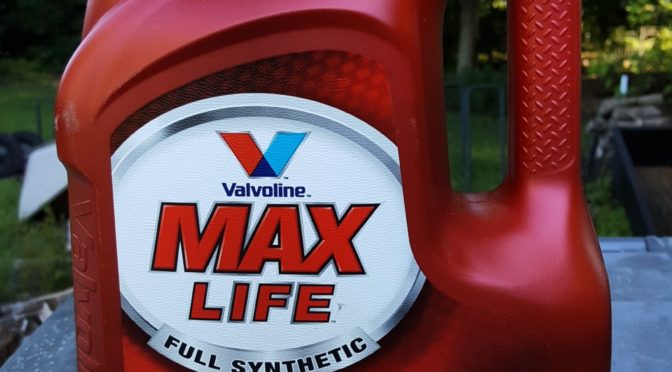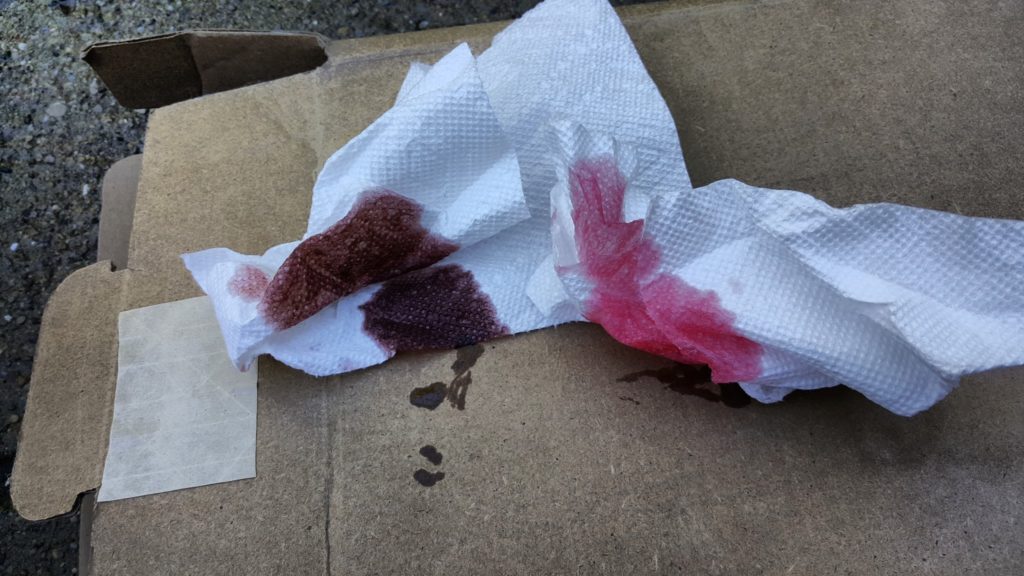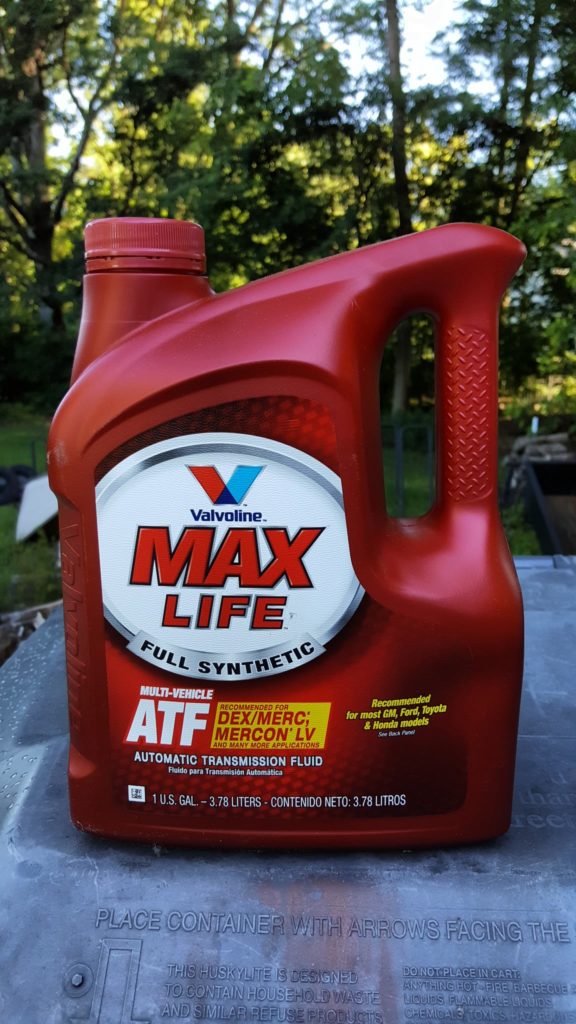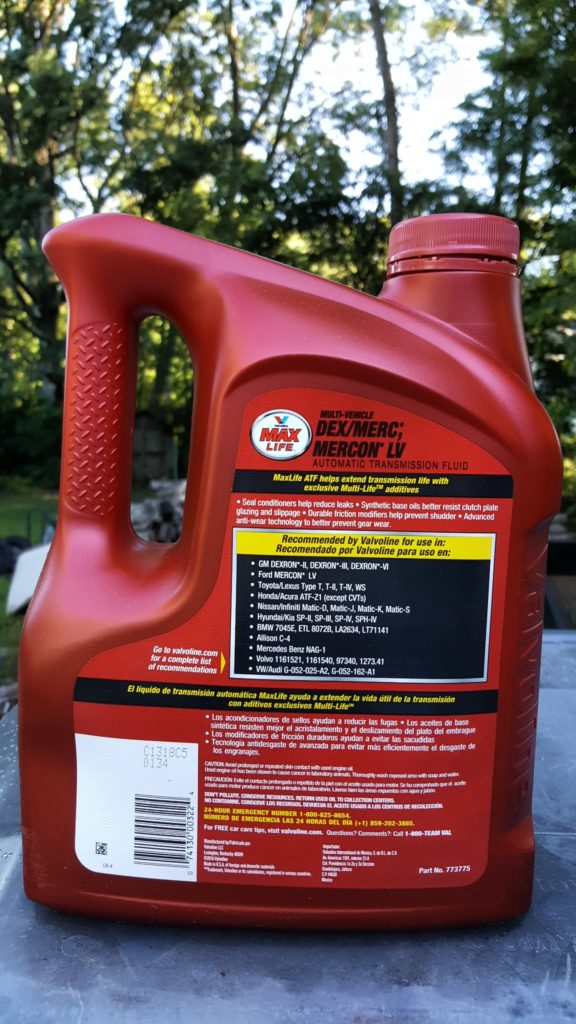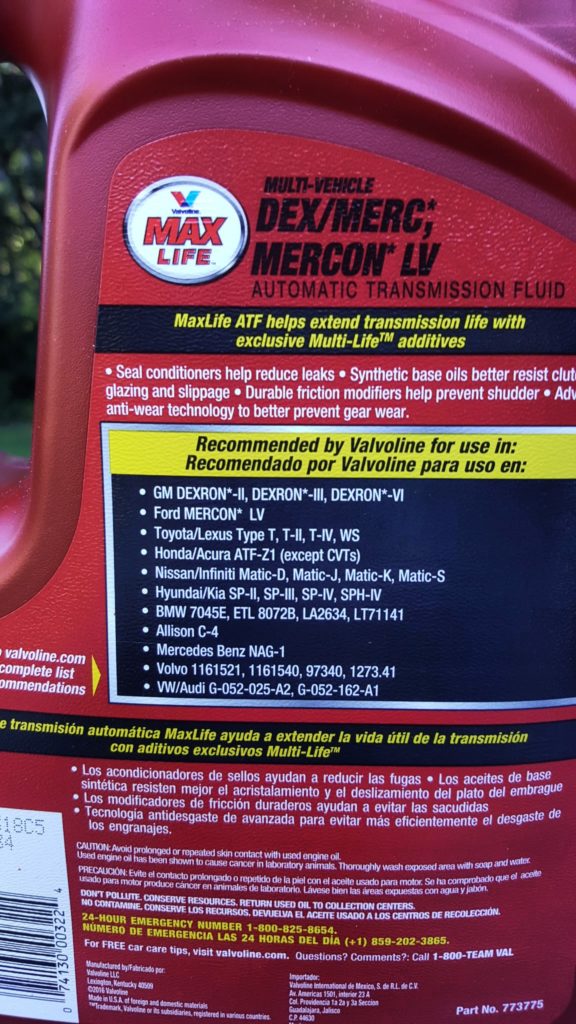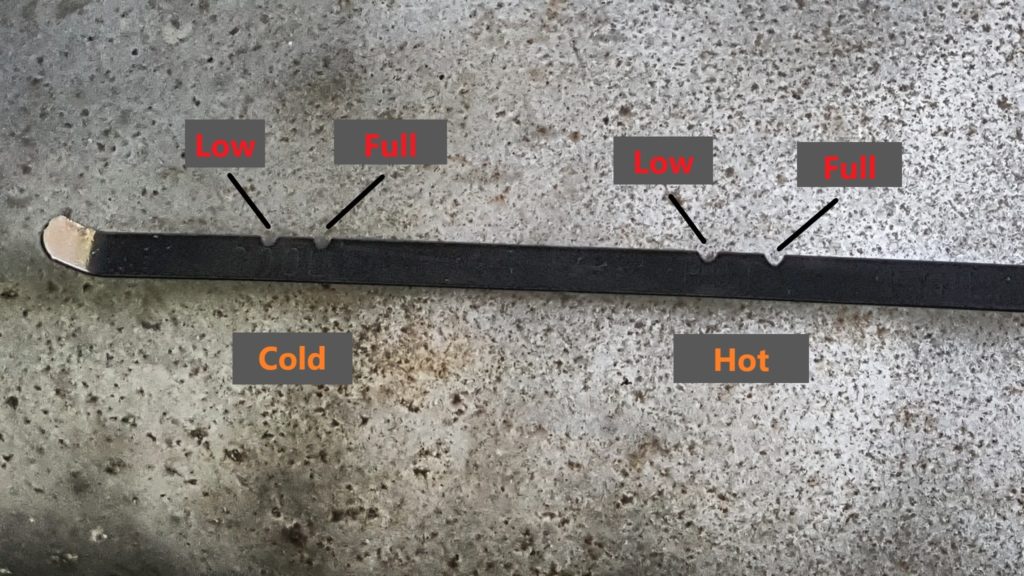We are a Toyota family and most of our cars were bought either used or very used from private parties. At any rate, a few years ago I bought a 2002 Toyota Camry XLE with a 4-Cylinder engine. The other day my older daughter said it was making a funny noise in reverse so I checked the dipstick. Wow. Not only was it low but the ATF looked awful. For comparison, the below photo with the brownish ATF on the white paper towel is on the left and brand new ATF is on the right. Wow!! (Yeah, I wrote wow twice because I was stunned.
So I told my daughter to ride with her sister in our old 92 Corolla and that I needed to work on their car. First thing I did was to look at the fluid a couple of times – it was brownish but not black, no metal flakes and no bad smell.
In reading the manual, Toyota wrote that the transmission fluid should be good for the life of the car … right. I guess it depends on how you view that, or at least how they view it. I’m sure I checked the fluid when we got the car and it wasn’t this color but I’m not in a habit of checking it regularly unless I see drips or a puddle under a car or truck.
This car had almost 195,000 miles on it and we put about 50,000 of those miles on it. I figured a change was past due. So, before I did anything, I decided to do some reading first.
Picking Valvoline Max Life ATF
I knew there were a ton of different automatic transmission fluids (ATF) out there and that getting the right one was key. The transmission was designed to use Toyota ATF T-IV and there are different brands that claim to meet the spec. The problem is that the wrong one can cause headaches. One particular formulation kept coming up as I read about what others used – Valvoline Max Life ATF:
Note in the next photo you can see that Valvoline says this can replace Toyota T-IV as well – it’s not just guys on the Internet. By the way, if you feel uncomfortable with what I am saying, definitely do your own research and you’ll see tons of favorable posts about using this fluid.
Okay, so I bought two gallons of the above. The automatic transmission in the car uses about 4.1 quarts. I used a 10mm allen bit in my Onyx 3/8″ impact wrench and drained everything I could from the pan. I then put the plug back in and added two quarts of fresh Max Life and let it run for about 30 seconds and shifted through the gears (I was up on 6 ton jack stands with rubber wheel chocks and the parking brake on).
I then removed the plug again and drained the fluid. I then removed the return line, started the car for maybe 30 seconds if that – I turned it off when nothing else was coming out. I then buttoned it all back up.
In theory the transmission was empty. I’ve had issues in the past where I assumed that was the case but it was not so I didn’t want to assume anything. I added two quarts and moved it to a perfectly flat spot on my driveway. I could just barely see a hint of ATF on the tip. I added a bit more to get it short of the cold empty mark.
I don’t trust the cold measure on the dipstick. With an automatic transmission it must be up to its operating temperature to get a good reading in the hot zone (the bottom mark is for cold is a ballpark – get it hot and then test as you absolutely do not want to overfill an automatic transmission). As it gets hot the fluid expands hence my wanting to know at temperature where I was at.
How to Check the Automatic Transmission Fluid Level
Now, to check the ATF level, Toyota does not tell you in the operator’s manual and I frown on that. With the car flat, let it idle (or drive it 10 miles if you have fluid in it – I had an unknown level so I didn’t want to get on the road) and let the engine and transmission come up to operating temperature (158-176F). Then, with your foot on the brake, shift the gear selector from park through all the gears, stopping at each one and then back up. With the car idling and the transmission in park, check the dipstick.
To make sure the engine and tranny were hot enough, I used my BAFX plug in OBD II probe that connects to the Torque app on my Android phone via Bluetooth.
I kept adding smaller and smaller amounts of ATF and moved the selector lever per the above before I would test the level again. I got it close to full in the hot range and then stopped. As mentioned, I did not want to go past full. By the way, when you are reading a dipstick with during filling, you must wipe it off each time to get a good reading and you may find that you get a better view of the fluid level on one side or the other of the dipstick.
In case you are wondering, I did not do the transmission filter. It would have taken a ton of time and I figured I would start with the fluid and see what happened.
The end result – it shifts beautifully. I could not be happier — even my wife thinks it shifts smoother and feels better. To wrap this up, I wrote this post in case one of you has questions about what transmission fluid is a good substitute for Toyota Type T-IV, and also how to properly check the automatic transmission fluid level.
6/1/2019 Update – Still no problems. Our 1992 Corolla sprung a leak in the transmission fluid cooling line so I had to both install some fuel like to patch the corroded line plus I had to refill the transmission fluid. That was about 2-300 miles ago and that is working fine too. Bottom line, I do think this fluid performs just fine in place of Toyota Type T-IV fluid.
9/10/2018 Update – The Camry XLE has been on a number of 200-400 mile highway road trips at highway speeds and shows no signs of shifting problems. The family agrees the car shifts smoother. I have now replaced the ATF in our 2004 Solara SLE and 1994 Corolla with Max Life ATF also and all are running well. The Solara has close to a 1,000 miles on it now. I’m very pleased with Max Life and will continue using it in my Toyotas. By the way, I now use an EWK Fluid Evacuator for getting the ATF exactly where I want it. Here’s the post about that tool.
2/23/2020 Update – No problems at all with any of the vehicles we’ve used Max Life ATF in. This includes a 2008 Toyota Highlander.
If you find this post useful, please share the link on Facebook, with your friends, etc. Your support is much appreciated and if you have any feedback, please email me at in**@*********ps.com. Please note that for links to other websites, we are only paid if there is an affiliate program such as Avantlink, Impact, Amazon and eBay and only if you purchase something. If you’d like to directly contribute towards our continued reporting, please visit our funding page.
